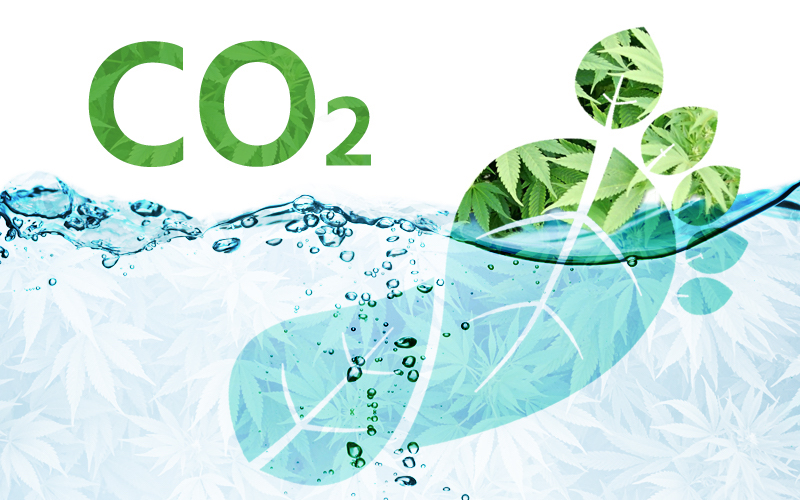As legalization is on the rise in the US, water consumption has become a concern for the cannabis industry, especially in Western states. Stephanie Piantanida of Cannabis Tech explains.

The following is an article produced by a contributing author. Growers Network does not endorse nor evaluate the claims of our contributors, nor do they influence our editorial process. We thank our contributors for their time and effort so we can continue our exclusive Growers Spotlight service.
Disclaimer
This article has been republished with permission from Cannabis Tech. See the original article here.
In the first part of this series, we discussed the excessive energy consumption that occurs in the modern cannabis industry. More recently, however, the ecological impact of water consumption and sustainability has also arisen for the cannabis industry. Due to the fact that much of the cannabis industry’s origins date back to desert regions such as Israel, Afghanistan, and more recently, the Western US, the question of water consumption is on many minds, as both legislators and cultivators want to mitigate the effects of drought with sustainable water consumption practices.

Water Usage Red Flags
Some believe that the answer to reducing the environmental impact of the cannabis industry is through legalization. Full legalization would grant the government the ability to regulate the industry as well as legally and economically incentivize producers to become more sustainable in their practices. Legalization would allow grant money for academic research and structural improvements, which are currently available for other agricultural commodities, to be offered to the cannabis industry.
Because the industry has been sorely lacking research, however, no one knows the exact impact that the industry has had and will have on the environment. In California’s case, legalization has become a key component to protecting the environment. California’s northern coast, frequently referred to as the "Emerald Triangle," has been plagued with illegal outdoor grows for decades, many of which have harmed entire ecological communities. These illegal grows are most commonly started on public land, where water is typically irrigated from surrounding bodies of water, such as streams. The runoff water and pesticides can be an ecological nightmare, as certain pesticides and fertilizers descend into larger bodies of water, while more stationary pesticides (such as rat poison) get consumed by animals that are in turn eaten by other animals.
In 2015, the California Department of Fish and Wildlife published a study detailing how cannabis grows in the Emerald Triangle average as much as 6 gallons of water per plant, per day. If you take that value and multiply it by the massive scale of California's grows, it becomes easy to see how, in a state plagued by drought, water consumption has become a headline issue. NORML disputes these numbers as a gross overestimate, as they have found that the average water consumption is closer to 2.6 gallons per plant per day. Unfortunately, because of the lack of research in this area, the actual water usage rate has yet to be determined.
Water Regulations And Proactivity
With adult-use legalization in California came strict regulations and expectations for growers. Growers that pull from water sources such as rivers and streams will be held responsible for storing their own water supply. By requiring growers to maintain a regular water supply, consumption during the winter months will have a smaller impact, because water is scarcest in California during that time. Although some growers may only implement the minimum require to meet the regulations for initial inspections and licensure, the majority of growers are meeting, and exceeding regulatory demands. Outdoor cultivators, not just in California, are motivated to implement sustainable practices. Whether it be to meet regulations, lessen their environmental impact, or marketability, many cultivators are invested in their crops and want to be part of a cutting-edge industry that exceeds other comparable agricultural practices.
Indoor grows make water usage and wastage significantly easier to control:
- Creative irrigation practices are reducing eliminating overwatering and reducing evaporation; there are also ways to recycle and reuse runoff water.
- Cultivators are also collecting the condensation from humidity produced by transpiration and recycling it for use. Brandy Keen, co-founder and senior technical advisor at Surna, a company that creates water-efficient indoor cultivation equipment, boasts that indoor grows could be designed to have net-zero consumption.
As water-efficient practices are becoming more common, and consumers learn more about the environmental issues surrounding cannabis, cultivators are proactively seeking out new and improved watering methods.
Related Article: An Introduction to Closed-Loop Aquaponic Systems – Part 1 – Preparing for the Future
Endless Opportunities For Improvement
While the primary purpose of this series is to highlight the environmental footprint of the cannabis industry in the US, another takeaway should be that there is an overwhelming drive to improve, and that is a good thing. With improvement comes endless opportunities. The advancement of environmentally-sustainable practices have the potential to put cannabis above and beyond other agricultural businesses.
10 Best Gift Ideas for Cannabis Connoisseurs and Growing Aficionados (2022)
December 7, 2022Developing and Optimizing a Cannabis Cultivation System
December 14, 2021Dealing with Insomnia: How Can CBD Help?
December 10, 2020Your Guide to Sleep and CBD
December 7, 2020
Do you want to receive the next Grower's Spotlight as soon as it's available? Sign up below!
Resources:
Want to get in touch with Stephanie? She can be reached via the following methods:
- Website: https://www.cannabistech.com/

Do you have any questions or comments?

About the Author
Stephanie Piantanida is a freelance writer involved in multiple aspects of the cannabis industry. In addition to writing, Stephanie has and continues to work within the medicinal industry in multiple states. Through her writing she hopes to empower the community by educating them about the industry and their options within it.